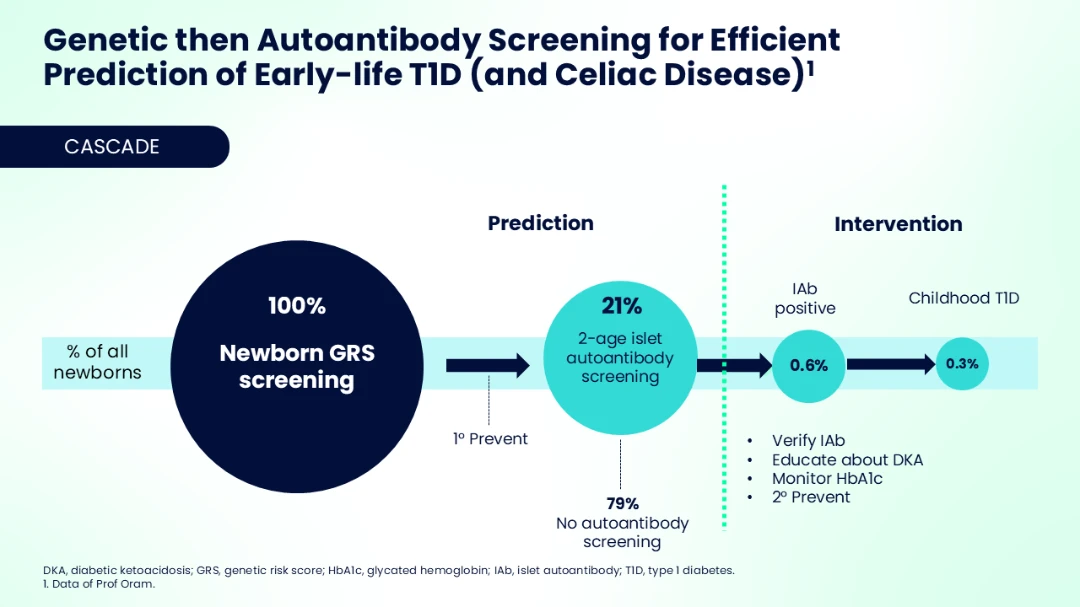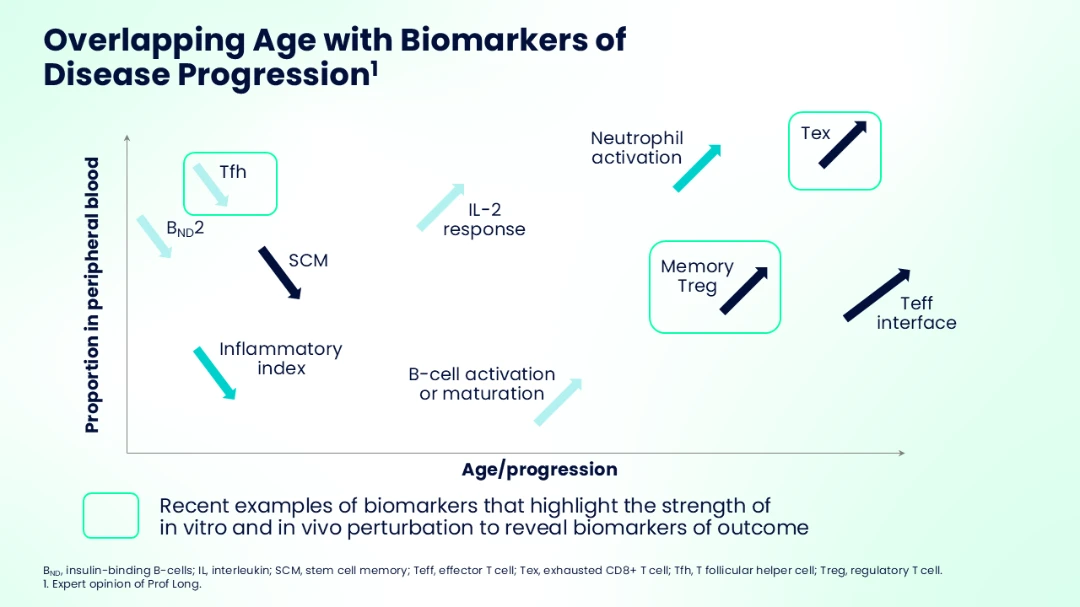- Resource
- BR1DGE
- Early Detection
- Pathophysiology
- Article
IDS 2024 Symposium Summary
At the BR1DGE symposium at IDS 2024, leading experts shared new insights on the mechanisms driving autoimmune type 1 diabetes (T1D), emphasizing the benefits of genetic risk scoring, and the latest biomarker research.
This article is intended to be a summary only. Additional topics were covered in the live symposium in line with the applicable regulations but are not included on the BR1DGE platform.
Meeting Objectives
- Describe the background of genetic risk scores (GRS), including their benefits when combined with islet autoantibody (IAb) screening
- Discuss the latest research in biomarker identification in people with T1D
Speakers
What Is the Role for Genetic Risk Scoring in T1D Screening and Prediction
Richard Oram
"T1D is not like most common complex traits [...] It has genetic associations across the genome which are important and mechanistically really important to new drug discovery and understanding the mechanism of T1D."
GRS assess the heritable risk of T1D and can make screening more efficient.
In the opening presentation, Professor Oram explored the benefits of GRS combined with IAb screening.
- Genome-wide association studies (GWAS) can enhance understanding of polygenetic risk and form the basis for GRS.1,2
- T1D can be driven by several genes, most prominently the HLA complex.3
- T1D GRS can be used to discriminate between T1D, type 2 diabetes (T2D) and maturity onset diabetes of the young (MODY).4,5
- The top 10% of the population by T1D GRS2 contains 78% of T1D cases, and overall, the top 0.1% of the population by GRS2 has a >20% risk of T1D.6
- Calculating T1D risk allows removal of people at low risk from follow-up, enabling clinicians to focus on individuals at increased risk.7
A Rapidly Expanding Field: Biomarkers in T1D
Alice Long
"We’ve had great successes with biomarkers in T1D so far and I think now the future of biomarkers is going to delve more into mechanisms of disease that will help us really select individuals for treatment, it will help us in the disease to decide when to start treating, it can help us dose correctly, meaning when do we treat and how much do we treat with, and can we evaluate whether we successfully treated an individual?"
Early screening for IAbs is crucial to detect T1D before clinical onset, enabling better glycemic control, reduced risk of diabetic ketoacidosis (DKA), and improved long-term outcomes.
Dr Long provided insights into the use of biomarkers in T1D, including those promising for assessing disease progression speed.
- Several biomarkers are currently used in T1D, and several more are in development.1,2
- For example, C-peptide can be used to assess beta-cell function in the years before T1D diagnosis.3,4
- Transcriptional biomarkers may identify individuals with fast versus slow loss of C-peptide.5
- Exhaustion within islet-specific cluster of differentiation 8 (CD8) T cells is associated with disease progression.6
- Additional topics were covered in the presentation in line with the applicable regulations but are not included on the BR1DGE platform.
MAT-GLB-2405131-1.0 – 12/2024
At the time of this presentation, Richard Oram declared the following conflicts of interest: Janssen, Provention Bio, Randox, Sanofi.
At the time of this presentation, Alice Long declared the following conflicts of interest: Benaroya Research Institute, Breakthrough T1D, Co-Investigator on patent related to teplizumab treatment of T1D, Helmsley Trust, NIAID, NIH, NIDDK, SAB Bio, SonomaBio.
At the time of this presentation, Kevan Herold declared the following conflicts of interest: Dompé, Inventor on a patent for the use of teplizumab for delay or prevention of type 1 diabetes but have no financial interest, JDRF, NexImmune, NIH, Sanofi, Shoreline AP, Sonoma.
What Is the Role for Genetic Risk Scoring in T1D Screening and Prediction?
- Schunkert H, et al. Nat Genet. 2011;43(4):333-8.
- Khera AV, et al. Nat Genet. 2018;50(9):1219-24.
- Luckett AM, et al. Diabetologia. 2023;13;66(9):1589-1600.
- Patel KA, et al. Diabetes. 2016;65(7):2094-99.
- Oram RA, et al. Diabetes Care. 2016;39(3):337-44.
- Sharp SA, et al. Diabetes Care. 2019;42(2):200-7.
- Dayan CM, et al. Science 2021;373(6554):506-10.
A Rapidly Expanding Field: Biomarkers in T1D
- Yi L, Swensen AC, Qian WJ. Transl Res. 2018;201:13-25.
- Fyvie MJ, et al. Front Immunol. 2023:14:1158278.
- Maddaloni E, et al. Diabetes Obes Metab. 2022;24:1912-26.
- Evans-Molina C, et al. JCI Insight. 2018;3(15):e120877.
- Dufort M, et al. JCI Insight. 2019;4(4):e125556.
- Wiedeman AE, et al. J Clin Invest. 2020;130(1):480-90.











.jpg/jcr:content/225SFAD0116_Talks_Preview_400x300%20(3).jpg)